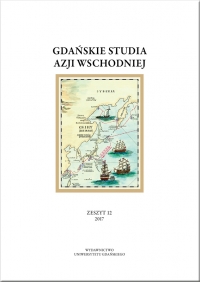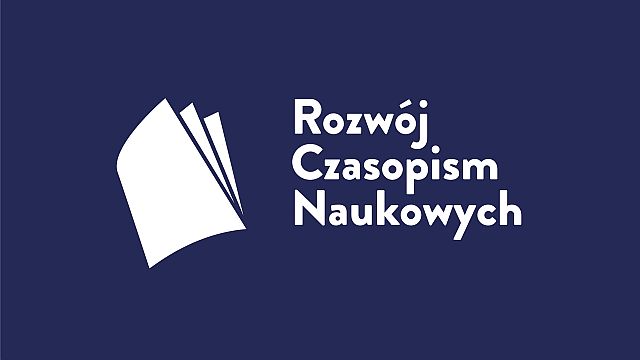Azjatyckie dobra kultury w Europie. Ekspansja rynku sztuki i nielegalny handel dziedzictwem kultury – Zarys zagadnień prawnych
Abstrakt
Wzrost znaczenia azjatyckiego rynku sztuki, jego silny związek z europejskimi i amerykańskimi rynkami bezpośrednio wpływa na wzmocnienie sposobów zapobiegania nielegalnemu handlowi dobrami kultury i poszerzenie zakresu regulacji międzynarodowych. Kluczową rolę w badaniu tak zdefiniowanego problemu odgrywa rozwój technologii oraz dostępność baz dzieł zagrabionych i katalogów aukcyjnych. Niewystarczająca zmiana przepisów regulujących rynek sztuki nie jest jedynym aspektem obecnie podejmowanym w literaturze przedmiotu. Brak jednolitych przepisów prawnych okazuje się podstawowym problemem w obrocie dziełami sztuki między Europą a Chinami, ze szczególnym uwzględnieniem specyfiki Hongkongu. Innym zagadnieniem ważnym szczególnie w przypadku rynków rozwijających się, takich jak polski rynek sztuki, jest problem identyfikacji i kategoryzacji azjatyckich dóbr kultury. Warunkiem koniecznym do rozwoju badań, poza dostosowaniem przepisów, jest stworzenie sieci certyfikowanych ekspertów w tej materii.
Downloads
Bibliografia
D. Boll, Art for Sale, Ostfildern 2011.
P. Gladston, Contemporary Chinese Art: A Critical History, London 2014.
S.H. Hsieh, J.P. Lee, L.Y. Tzeng, Art as an Investment: Empirical Study of Asian Contemporary and Chinese 20th Century Modern Art, http://www.fin.ntu.edu.tw/~conference/conference2010/proceedings/proceeding/11/11-1(A40).pdf (accessed: 12.08.2016).
Defying all forecasts: China upped 18%, dominated the global Art Market in the first half of 2016, Artprice.com, https://www.artprice.com/artmarketinsight/artpricecom-defying-all-forecasts-china-upped-18-dominated-the-global-art-market-in-the-first-half-of-2016 (accessed: 21.10.2016).
B. Boucher, The Art Market Moves East: How Gagosian, David Zwirner, and 14 Other Western Art Businesses Are Trying to Expand to Asia,Artnet, 15 November 2017, https://news.artnet.com/market/asia-round-up-galleries-auction-houses-1135454 (accessed: 17.11. 2017).
S. Tsang, A Modern History of Hong Kong, London 2007.
R.A.J. Pownall, TEFAF Art Market Report 2017.
C. McAndrew, TEFAF Art Market Report 2014: The Global Art Market, with a Focus on the US and China, Maastricht 2014.
O. Velthius, S.B. Curioni, Cosmopolitan Canvases: The Globalization of Markets for Contemporary Art, Oxford – New York 2015.
J. Zarobell, How Freeports Operate on the Margins of the Global Art Market, 14.07.2017, https://www.artsy.net/article/artsy-editorial-freeports-operate-margins-global-art-market (accessed: 11.11.2017).
Artist’s Resale Right, Intellectual Property Office, https://www.gov.uk/guidance/artists-resale-right (accessed: 7.05.2017).
Art and Finance Report 2016, Deloitte, ArtTactic, https://www2.deloitte.com/content/dam/Deloitte/lu/Documents/financial-services/artandfinance/lu-en-artandfinancereport-21042016.pdf (accessed: 11.11.2017).
M.A. Renold, Cross-border restitution claims of art looted in armed conflicts and wars and alternatives to court litigations, Directorate General for Internal Policies Policy Department C: Citizens’ Rights and Constitutional Affairs, 2016.
A. Wallace, A.L. Bandle, M.A. Renold, Case Two Bronze Animal Heads – China and Pierre Bergé, https://plone.unige.ch/art-adr/cases-affaires/two-bronze-animal-heads-2013-china-and-pierre-berge (accessed: 11.11.2017).
K. Zeidler, Restitution of Cultural Property. Hard Case – Theory of Argumentation – Philosophy of Law, Gdańsk – Warsaw 2016.
W. Kowalski, Types of Claims for Recovery of Lost Cultural Property, “Museum International” 2005, Vol. LVII, No. 4 (228).
K. Zalasińska, Dobra wiara jako przesłanka ochrony nabywców kradzionych dzieł sztuki. Wybrane zagadnienia, “Palestra” 2010, No. 5/6.
W. Szafrański, Nowe zjawiska w obrębie przestępczości na rynku sztuki w Polsce [in:] Przestępczość przeciwko dziedzictwu kulturowemu. Diagnoza, zapobieganie, zwalczanie, eds. M. Trzciński, O. Jakubowski, Wrocław 2016.
Operational Guidelines for the Implementation of the Convention on the Means of Prohibiting and Preventing the Illicit Import, Export and Transfer of Ownership of Cultural Property, UNESCO, Paris, 1970.
M. Yu, E. Velioglu Yildizci, M.A. Renold, 3000 Archeological Objects – China and Two British Dealers, https://plone.unige.ch/art-adr/cases-affaires/3000-archeological-objects-2013-china-and-two-british-dealers (accessed: 11.11.2017).
J. Wei, Chinese Foreign Investment Laws and Policies: Evolution and Transformation, Westport, CN 1994.
R. Blumenthal, T. Mashberg, TED Prize Goes to Archaeologist Who Combats Looting with Satellite Technology, “The New York Times”, 8.11.2015.
M. Bryl, Rynek sztuki w Polsce. Poradnik dla kolekcjonerów i inwestorów, Warszawa 2016.

 Uniwersyteckie Czasopisma Naukowe
Uniwersyteckie Czasopisma Naukowe





